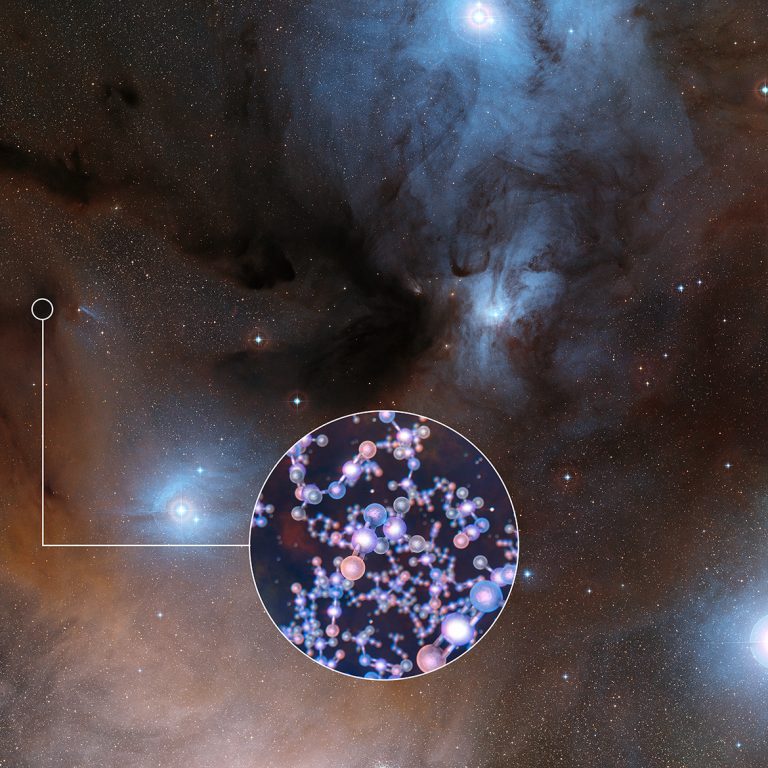Two teams of astronomers have harnessed the power of the Atacama Large Millimeter/submillimeter Array (ALMA) in Chile to detect a series of organic molecules around STARS. What is fascinating about the discovery is that these substances are the basic ingredients necessary for life, and were found around young stars similar to our Sun.
ALMA has observed stars like the Sun at a very early stage in their formation and found traces of methyl isocyanate — a chemical building block of life. This is the first ever detection of this prebiotic molecule towards solar-type protostars, the sort from which our Solar System evolved. The discovery could help astronomers understand how life arose on Earth. Credit: ESO/Digitized Sky Survey 2/L. Calçada
Science, space and the universe, in general, continue to surprise us every single day.
According to the European Southern Observatory (ESO), the ALMA telescope has observed stars like the Sun at a very early stage in their formation and found traces of methyl isocyanate — a chemical building block of life. This is the first ever detection of this prebiotic molecule towards solar-type protostars, the sort from which our Solar System evolved. The discovery could help astronomers understand how life arose on Earth.
“This star system seems to keep on giving! Following the discovery of sugars, we’ve now found methyl isocyanate. This family of organic molecules is involved in the synthesis of peptides and amino acids, which, in the form of proteins, are the biological basis for life as we know it,” explain Niels Ligterink and Audrey Coutens from the Leiden Observatory in the Netherlands and University College London, United Kingdom respectively.
Scientists were able to make the discovery thanks to Alma’s ability to observe the molecule at several different and characteristic wavelengths across the radio spectrum reports eso.org. When it comes down to searching for extraterrestrial life, it is common for astronomers to look at exoplanets, but the truth is that orbiting stars can be just as important.
In this case, the new research suggests that life on Earth was made possible thanks to our sun. The prebiotic complex organic molecule methylisocyanate was found in the multiple star system IRAS 16293-2422. The system is composed of very young stars, around 400 light-years away in a large star-forming region called Rho Ophiuchi in the constellation of Ophiuchus (The Serpent Bearer).
The new results from ALMA show that methyl isocyanate gas surrounds each of these young stars.
These young stars usually evolve like our Sun, why the discovery is so exciting because it can help us understand how life first emerged on Earth. The work of astronomers suggests that these molecules could have formed first in the Sun before being transported to Earth.
Rafael Martín-Doménech and Víctor M. Rivilla, lead authors of one of the papers, comment: “We are particularly excited about the result because these protostars are very similar to the Sun at the beginning of its lifetime, with the sort of conditions that are well suited for Earth-sized planets to form. By finding prebiotic molecules in this study, we may now have another piece of the puzzle in understanding how life came about on our planet.”
This research was presented in two papers: “First Detection of Methyl Isocyanate (CH3NCO) in a solar-type Protostar” by R. Martín-Doménech et al. and “The ALMA-PILS survey: Detection of CH3NCO toward the low-mass protostar IRAS 16293-2422 and laboratory constraints on its formation”, by N. F. W. Ligterink et al.. Both papers will appear in the same issue of the Monthly Notices of the Royal Astronomical Society.

